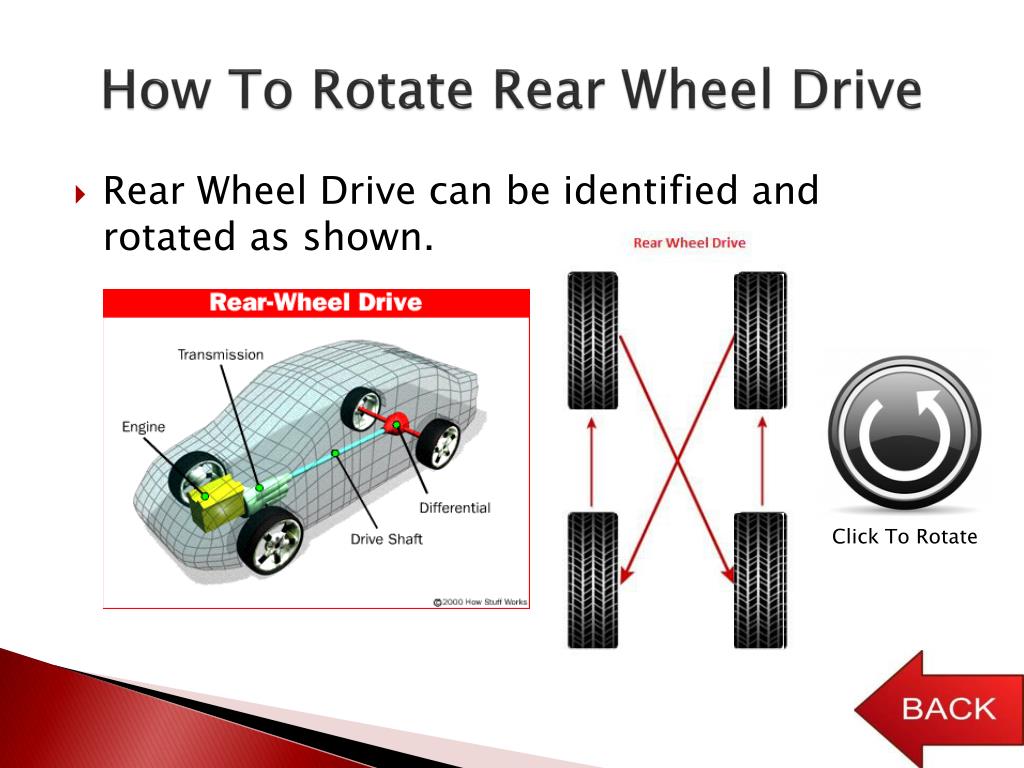Why should you get your tires rotated? Because it’s one of the easiest ways to extend the life of your tires and get the most miles out of them. And you only need to do it a couple of times a year.
Already know you need a tire rotation? Come visit us at one of our local stores or schedule an appointment.
Rotating the tires on your vehicle means moving them to different positions on your car or truck. This helps promote even tread wear on all four tires.
No matter how you drive, front and rear tires can wear at different rates. Tires that are mounted on the drive axle (the front two wheels on a front-wheel drive or back two on a rear-wheel drive) wear more quickly than the “free rolling” tires on the other axle.
Properly rotated tires can make for a smoother ride. It can also extend the life of your tires, saving you both time and money. By rotating your tires, you even out the wear to get the most tread life from every tire. Regular rotations are equally important, even if you have an all-wheel drive vehicle.
A good rule of thumb is every 5,000 miles. Depending on your vehicle, driving style, and tire type, you may need to rotate your tires more or less often. If you’re not sure, stop by Les Schwab. We’ll help you come up with a rotation schedule.
Regular tire rotations can help spot uneven tire wear early. Going too long between rotations may result in a wear pattern that can’t be fixed, no matter where the tire is moved on the vehicle. These wear patterns could result in the need for new tires sooner than expected.
Here are some ways to remember your next rotation.
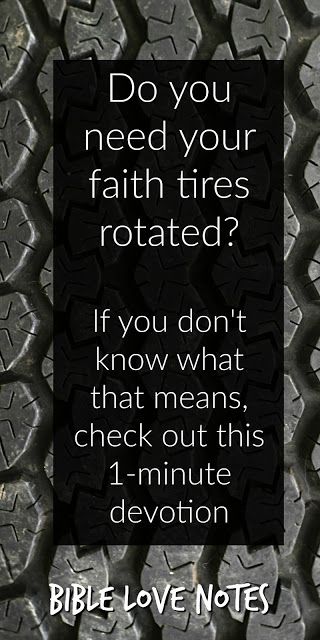
Getting your tires rotated every 5,000 miles is generally a pretty quick process. The professionals at Les Schwab will take the time to do a thorough tire rotation by also balancing your Les Schwab tires, checking your air pressure, doing a visual check of important safety systems, and documenting anything you should be aware of during the process. Once your vehicle is in our service bays, you can expect this procedure to be completed in about half an hour. Taking the time to make tire rotations a part of your normal vehicle maintenance regimen can add significant life to your tires, promote even tire wear for a smoother and more comfortable ride, and save you money in the long run.
The standard tire rotation is front-to-rear, but there are multiple patterns that could also help promote long tire life.
Here’s what Les Schwab tire pros consider to properly rotate and position the tires on your vehicle.
As always, check your owner’s manual for specific recommendations from the manufacturer.
If you have Les Schwab tires on your vehicle, rotations are free for the life of those tires. Plus we balance your wheels as part of the service. Don’t have Les Schwab tires? Our pros can still help maximize the life of your tires. Stop by your local Les Schwab for a quick estimate.
Don’t put tire rotations off. This simple task can maximize the life of your tires. When you buy tires from Les Schwab, we rotate them for free on most vehicles. Plus, we provide free rotation reminders by email.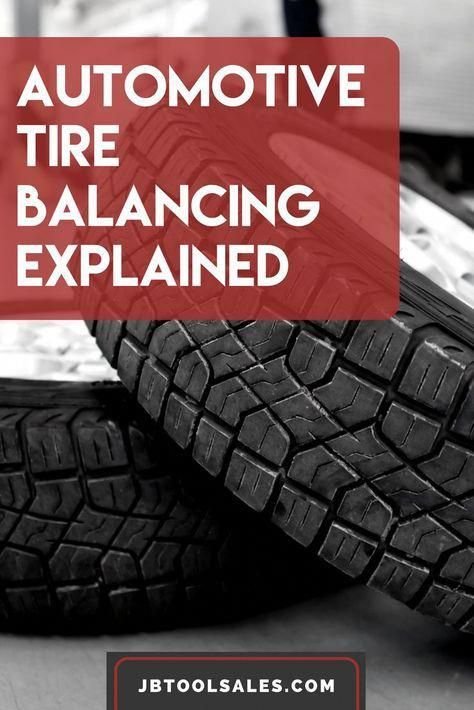 Just ask at your local store.
Just ask at your local store.
Calculate Out-The-Door Price
close
Tires
You care about your car and know it’s important to have your tires rotated at regular intervals. You also know that getting this done evens out tire wear, which means better handling and traction for you. But what exactly are “regular intervals”? Learn how often you should get a tire rotation, what's typically involved in the service, and how it can save you from having to buy new tires down the road. That's more money in your pocket for the things you care about!
Most vehicle manufacturers recommend that you get your tires rotated approximately every 7,500 miles or six months. However, some vehicles are exceptions and it’s always best to refer to your owner’s manual. This number can change depending on how, where, and what you drive. Simplify things by making it a habit to get your tires rotated every time you get your oil changed.
However, some vehicles are exceptions and it’s always best to refer to your owner’s manual. This number can change depending on how, where, and what you drive. Simplify things by making it a habit to get your tires rotated every time you get your oil changed.
Tire rotation consists of switching the front and rear tires. It’s crucial to do this because the drive tires (i.e. front tires in front wheel drive vehicles) work harder than the others. If you don’t swap them out, these tires will wear down faster. By rotating your tires, you distribute the burden among all four tires and ensure they wear down evenly. Take a look at the tire rotation pattern below and you'll see! At Firestone Complete Auto Care, our expert technicians remove, swap, and remount your tires so they live longer and drive safer.

Regular tire rotations reduce your risk of various tire problems—most obviously, a tire failure or blowout. By regularly rotating your tires, you’ll be less likely to experience those, reducing your risk for an inconvenient and even potentially dangerous situation. Tire rotations also help improve traction and fuel efficiency by ensuring your vehicle's tires wear down evenly. This increases the lifespan of your tires, meaning you’ll save money in the long run.
Getting your tires rotated is key to getting the best performance from both your tires and your vehicle. If you can't remember the last time you had your tires rotated, there's a pretty good chance they're overdue for this important service. Make an appointment for a tire rotation at your local Firestone Complete Auto Care today! We’ll get you rotated and rolling in no time.
Schedule
Tires
Aug 22, 2016
Tread wear, your tires exposure to the elements, and tire age may all be contributing factors to your needing new tires. Read on to learn how to tell.
Read on to learn how to tell.
Read More
Tires
Aug 22, 2016
Firestone tires create a whole new driving experience. Learn about the technology of our tires that improves driving on straightaways and handling ability.
Read More
Tires
Aug 22, 2016
Tires are an investment & you want them to last. Here are some tire care tips to help you get the most out of your tires & info on our free inspection
Read More
LOAD 3 MORE
SHOWING 6 OF 12
Tires
Nov 20, 2017
Winter tires are your key to safe driving in the cold, but why? Stay informed to stay safe, with these 6 essential facts from Firestone Complete Auto Care.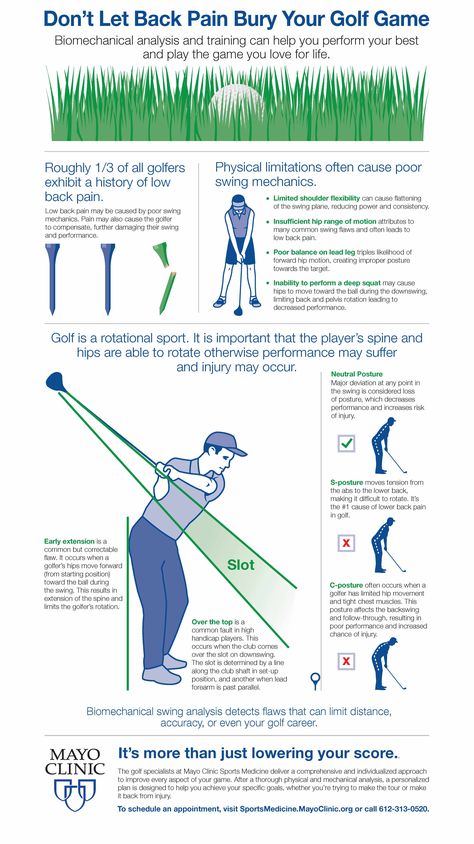
Read More
Tires
Oct 30, 2017
Here's what you need to know about changing out your tires for winter! Stay safe on the road and ahead of the winter rush with Firestone Complete Auto Care.
Read More
Tires
Oct 2, 2017
Yes, there is a right way to store tires! Help your tires live their longest life by following these easy storage steps, from Firestone Complete Auto Care.
Read More
{{storeNumber}}
{{storeName}}
{{link-icon "Call Us" mobileCallLink null "call-cta"}} {{link-icon "Directions" directions "_blank" "directions-cta"}}
{{address}}
{{city}}, {{state}} {{zip}}
{{#if activeFlag}} {{#ifCond mystore "or" myPreferredStore}} {{#ifCond storeType 'eq' "TPL"}}
*Call store for appointment {{phone}}
{{else}} {{#if onlineAppointmentActiveFlag }}
{{#if myPreferredStore}}
{{else}}
*Call store for appointment {{phone}}
{{/if}} {{/ifCond}} {{else}} {{#ifCond storeType 'eq' "TPL"}}
*Call store for appointment {{phone}}
{{else}}
Schedule Appointment {{#if onlineAppointmentActiveFlag}} {{else}}
*Call store for appointment {{phone}}
{{/if}}
{{/ifCond}} {{/ifCond}} {{else}}
*Temporarily Closed Due To: {{temporarilyClosedReason}}
{{/if}} {{#if isMilitaryStore}}
*This location is on an active US military base. You may need military ID to access the location.
You may need military ID to access the location.
{{/if}}
{{#ifCond count 'eq' "3"}} Show More Stores {{/ifCond}}
LADA
UAZ
KIA
Hyundai
Renault
Toyota
Volkswagen
Skoda
BMTs
BMAN
BMARS
BMAN
Mitsubishi
Mazda
Ford
All brands
Related materials
Seasonal tire change: everything car owners need to know
To begin with, a small educational program. Balancing is the alignment of the center of mass of the wheel with the axis of rotation.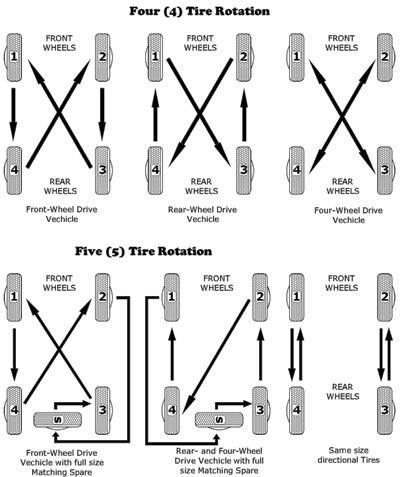 In this case, the loads are fixed opposite the heavy part of the wheel. This is the definition of static balancing. And since the wheel is not a thin disk, but rather a wide roller, the so-called dynamic balancing is necessary, when loads are placed both on the outer and on the inner parts of the wheel disk. Naturally, the wheels need to be balanced immediately after mounting the tire on the rim: after all, the imbalance can reach 50–60 g on each side. If it turns out more, then it makes sense to "twist" the tire relative to the disk, ensuring their mutual rotation by 180 degrees. With this initial balancing, tire workers provide an imbalance of less than 5 g per side. It is believed that a new tire is capable of slightly changing its position on the disk in the first kilometers, and therefore the balancing will go away a little.
In this case, the loads are fixed opposite the heavy part of the wheel. This is the definition of static balancing. And since the wheel is not a thin disk, but rather a wide roller, the so-called dynamic balancing is necessary, when loads are placed both on the outer and on the inner parts of the wheel disk. Naturally, the wheels need to be balanced immediately after mounting the tire on the rim: after all, the imbalance can reach 50–60 g on each side. If it turns out more, then it makes sense to "twist" the tire relative to the disk, ensuring their mutual rotation by 180 degrees. With this initial balancing, tire workers provide an imbalance of less than 5 g per side. It is believed that a new tire is capable of slightly changing its position on the disk in the first kilometers, and therefore the balancing will go away a little.
Now let's turn directly to our topic. If you alternately install either winter or summer tires on the same wheels, then you cannot avoid balancing. There is nothing to argue about here. The question of balancing every season arises only for those car owners who have two complete sets of wheels: summer and winter.
The question of balancing every season arises only for those car owners who have two complete sets of wheels: summer and winter.
Related materials
Routine work that everyone ignores (and in vain!)
So, should the wheels be balanced at every seasonal change?
If you approach the process formally, then you should remember the instructions for the car. It is usually recommended to balance the wheels after a run of 10,000 to 15,000 km. If you drive less in one season, then you definitely shouldn’t balance, except for the cases specified below.
But this is in theory, but in practice I advise you to monitor the behavior of the car. If there is no noticeable beating of the steering wheel, then balancing is not needed. The beating of the rear wheels is felt less, but they usually suffer less often. In any case, you should feel a strong imbalance.
If you change your own wheels twice a year, the following recommendation applies. Put the wheels on and ride for a couple of days. During this time, the tire will get rid of the deformations that occurred during storage. If there are no vibrations at any speed with which you drive, balancing can not be carried out.
Put the wheels on and ride for a couple of days. During this time, the tire will get rid of the deformations that occurred during storage. If there are no vibrations at any speed with which you drive, balancing can not be carried out.
Related materials
10 procedures without which it is better not to drive
Balancing is required in the following cases:
Photo: depositphotos.com
Our new video
When the roadster "Krym" will appear - new details
New Russian sedan at the price of Vesta on "Behind the wheel" tests
When will the Russian electric truck EVM Pro appear? Details known
Did you like the article? Subscribe and you will always be in the know!
Driving in Zen
Most car owners, having once balanced the wheels in a tire shop, mentally “put a tick” in front of the corresponding list of operations necessary for the car and forget about this topic. But in vain.
But in vain.
Maxim Stroker
Let's say right away that car owners, who change tires seasonally on the same discs every autumn and spring, in most cases do not have to think about preventive wheel balancing. With their rubber, this operation is carried out at each visit to the tire shop. Another thing is if a person, for example, drives the same “all-weather” all year round. Or the car owner has two seasonal sets of wheels mounted on disks.
Recall that balancing is the operation of moving the center of mass of the wheel to its geometric center on the axis of rotation. To do this, the service employee attaches weights of the required weight to the disk of the assembled wheel in the places determined using the balancing stand. Over time, these metal patches can fall off. Tires wear unevenly. Each puncture in rubber means an extra patch on its inner surface or a tourniquet inserted into the tread. The disk itself can bend when it hits the hole.
All these factors significantly shift the center of gravity of the wheel.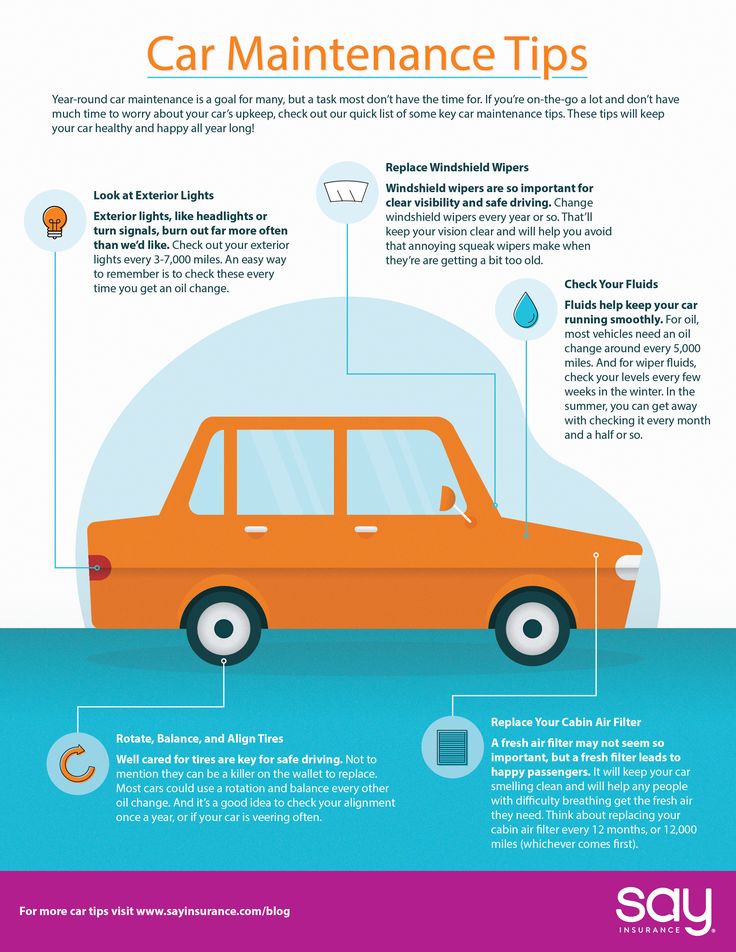 Its shift leads to the appearance of beats and vibrations on the go. The suspension, the steering system suffer from this, the wheel itself begins to wear unevenly even at speeds when the driver does not feel much discomfort on the steering wheel. The approximate frequency with which it is recommended to resort to preventive wheel balancing is calculated in kilometers.
Its shift leads to the appearance of beats and vibrations on the go. The suspension, the steering system suffer from this, the wheel itself begins to wear unevenly even at speeds when the driver does not feel much discomfort on the steering wheel. The approximate frequency with which it is recommended to resort to preventive wheel balancing is calculated in kilometers.
Approximately every 10,000-15,000 km. it is worth visiting a tire shop and checking the balance, since obvious beating, as the main sign of imbalance, can only be felt for the front wheels. In this case, at a certain speed, the steering wheel starts to shake frantically. The rear axle is not connected to the steering wheel, and therefore it is much more difficult to notice that something is wrong with it.
Thus, if the car rolls more than 15,000 km per season on one set of tires, it is highly recommended to visit a tire fitting station after reaching this mileage. For fans of all-weather tires, this recommendation applies in the same way, only without reference to the time of year.